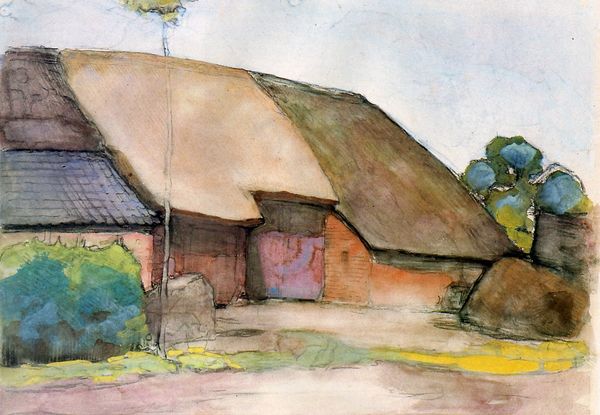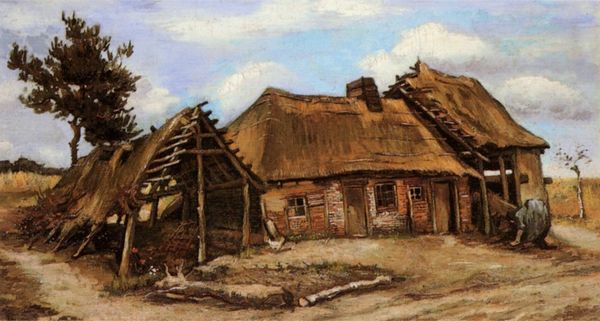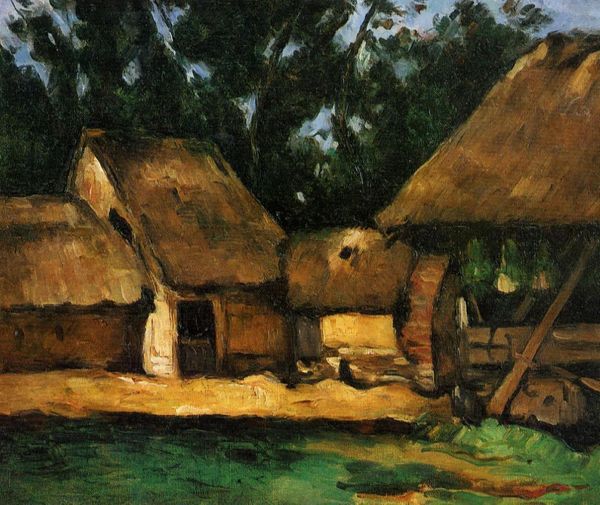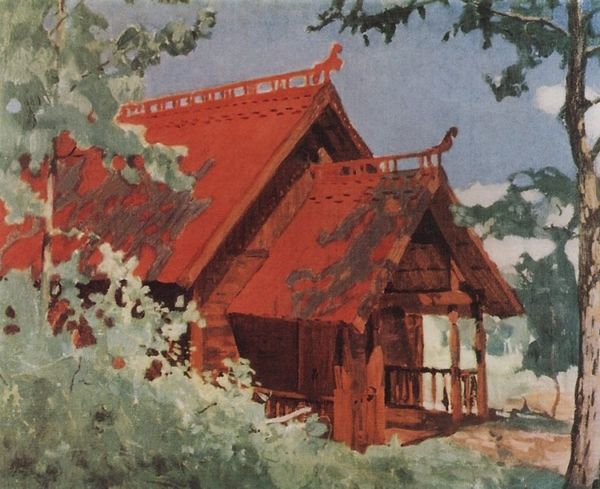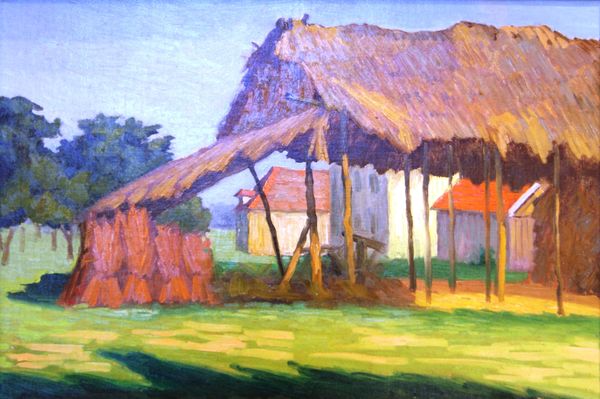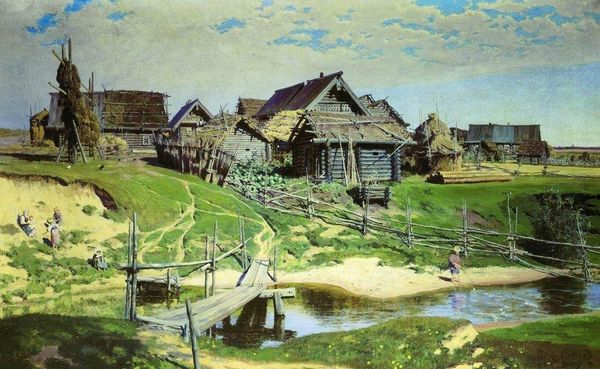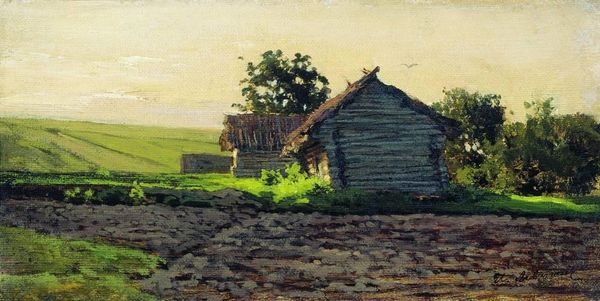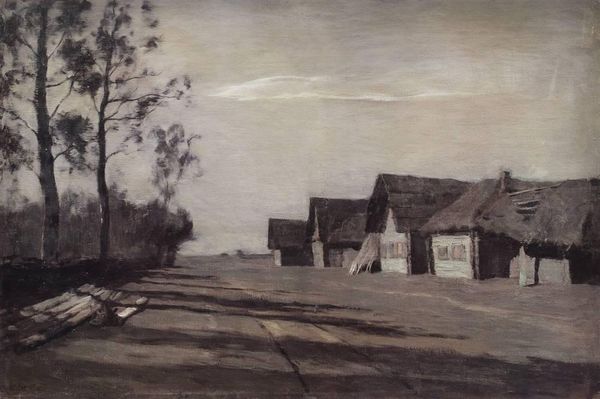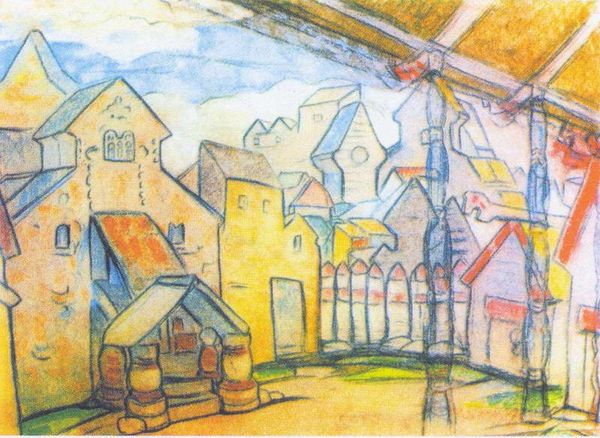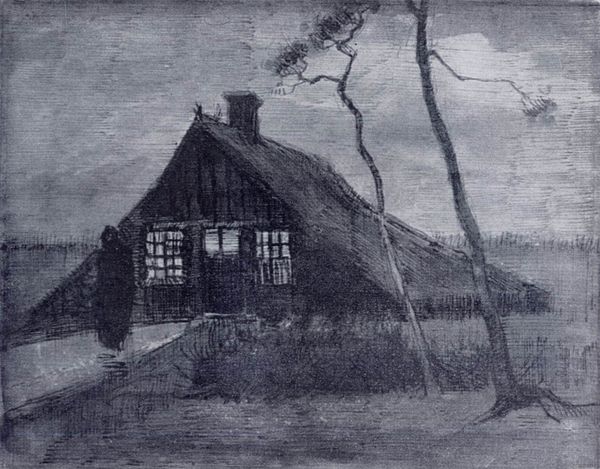
painting, plein-air, watercolor
#
dutch-golden-age
#
painting
#
plein-air
#
landscape
#
watercolor
#
realism
#
building
Copyright: Public domain
Curator: This watercolor, titled "Small farm on Nistelrode," was rendered by Piet Mondrian in 1904. It is currently held in a private collection. What strikes you most about this early Mondrian? Editor: The subdued, almost melancholic tone is quite prominent. It seems so far removed from his later, geometric abstractions. The way he's captured the heaviness of the thatched roof is striking; it feels like it's bearing down on the landscape. Curator: The style adheres to Dutch Realism and reflects Mondrian's plein-air approach at this time. I think we can read the thatched roof, indeed the entire farm, as symbolic of a traditional way of life that was soon to vanish amidst rapid urbanization in the Netherlands. Note how it dominates the visual space of the scene. Editor: Absolutely. The architecture itself seems almost to hunch down, weighed down by the inevitability of change. It feels deeply rooted in a specific moment. It uses earthy colors like ochre and russet. How do you interpret the significance of these buildings themselves, not only that the fact that there's a farm? Curator: In Dutch painting of the time, farmhouses often served as symbols of both stability and the working class. Mondrian gives a symbolic value to a common place. But the watercolor medium lends the entire scene a sense of fragility, highlighting the precariousness of this rural existence, an elegy, perhaps, for an agrarian society. I sense both affection and detachment in Mondrian's treatment here. Editor: That sense of detachment is key. It makes me wonder about Mondrian's personal relationship to this imagery. Is it merely observational, a social document, or is there a deeper psychological investment in the subject matter? This reminds me of a wider, cultural trend toward rural retreat for artistic subject matter, at this time. Curator: Good point, and while seemingly objective, the heavy impasto application reveals emotional texture under the detached realism. What persists across Mondrian's evolving vision, it seems, is his quest for order and essence—the bare structure underneath. Editor: Yes. It's tempting to view pieces such as this early watercolor as merely a step in his journey toward abstraction, yet these images resonate on their own as powerful statements about the relationship between landscape, memory, and social change. Curator: Indeed. There's an evocative beauty here that reminds us not to neglect this important phase in his stylistic evolution. Editor: Thank you for sharing your perspective, it has revealed previously unseen meanings within this striking scene of rustic solitude.
Comments
No comments
Be the first to comment and join the conversation on the ultimate creative platform.
